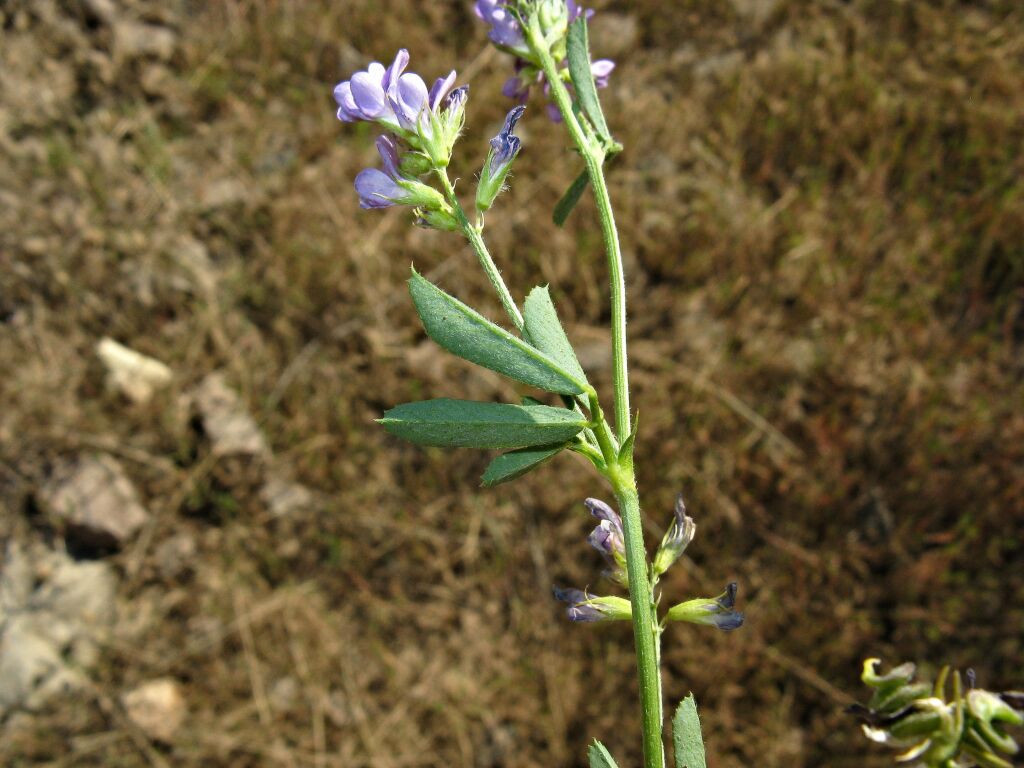Medicago sativa subsp. sativa
LucerneErect or ascending perennial herb; stems 30–120 cm long, glabrous or sparsely hairy; hairs simple. Leaflets narrow-obovate to oblong, 5–30 mm long, 3–15 mm wide, dentate towards apex, upper surface glabrous, lower surface appressed-hairy, apex rounded or truncate with a terminal tooth; stipules to c. 10 mm long, entire or dentate, lower surface hairy. Inflorescence 8–35-flowered; peduncle 1.5–6 cm long, much longer than subtending petiole. Pedicels to c. 2 mm long; calyx 4.5–7 mm long, teeth longer than tube; corolla purple or mauve; standard 6–13 mm long; wings longer than keel. Pod with 1–3 loose coils, discoid or lenticular, 1.5–6.5 mm long, 3–8 mm diam., with a central hole, glabrous or with simple appressed hairs, spineless; coil edge thin; face reticulate-veined; marginal vein raised above level of submarginal veins; grooves absent; seeds 2–10, to c. 2.5 mm long, greenish-yellow or brown. Flowers mainly Sep.–May
LoM, MuM, Wim, Brid, VVP, VRiv, RobP, MuF, GipP, OtP, WaP, Gold, CVU, DunT, NIS, HSF, HNF, Strz, VAlp. Scattered widely across northern Victoria and less common in the south; occurs mostly in pastures, disturbed ground and along road verges.
According to Small & Jomphe (1989) the M. sativa complex consists of 5 subspecies and 1 hybrid. Using their criteria—mainly pod characteristics and flower colour—most cultivars and naturalized forms in Australia appear to be referable to M. sativa subsp. sativa.
One of the world’s most valuable and widely cultivated fodder plants.
Jeanes, J.A. (1996). Fabaceae. In: Walsh, N.G.; Entwisle, T.J., Flora of Victoria Vol. 3, Dicotyledons Winteraceae to Myrtaceae, pp. 663–829. Inkata Press, Melbourne.
 Spinning
Spinning